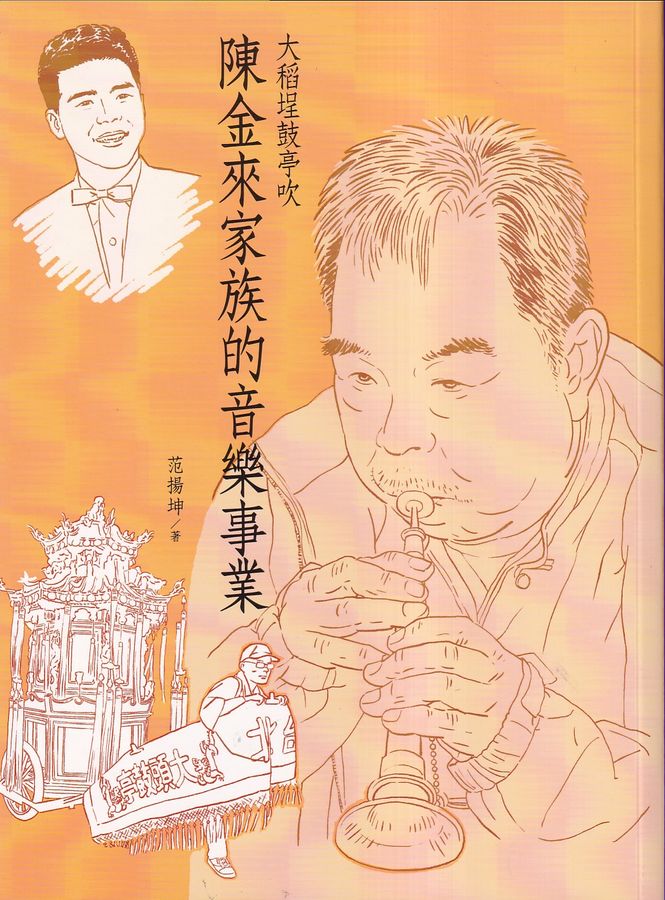The phrase “traditional” has always been a vague idea, in music taxonomies, similar phrases such as “folk” or “world music” are taken as an inertial phrase that never changes its definition.
To counter the homogenization of the nowadays music industries, we’re going back to the very beginning of Taiwan’s musical root- please note this is not the only root- but the root that has started being recognized as introducing a kind of “traditional music” in Taiwan that is infused with suona from Persia, gong from Gamelan and many cultures.
While many don’t know the fact that “traditional music” or so-called ceremonial music they heard on the street from time to time has such a complicated historical context due to long years of neglect in the education system, and the fragmentation of history caused by the dispersal of historical materials, Beiguan music remains unfamiliar to most Taiwanese until recently.
* Video taken in 1991, celebration of Gong Le Xuan and Xiqin Wangye - the god of art's 80 birthday.
Brief History of Beiguan
Beiguan (meaning: Northern Pipe) is an ever-evolving vague idea that includes many elements, and it was brought to Taiwan during the Ching dynasty as our ancestors crossed the Taiwan Strait. Many musical tunes and operas in Taiwan that didn't belong to the Hoklo or Hakka systems were categorized under Beiguan as well.
Beiguan is a form of popular art in the agricultural society and the main entertainment during leisure time, it is also a living style centering around temple, religion, and ceremony.
The main categories of Beiguan music are below:
- Pai-Tzu (牌子, sheet music mainly for suona and percussion)
- Youth tunes (幼曲 or 細曲, influenced by Kunqu Opera)
- String scores (絃譜, sheet music for string instruments)
- Operas (歌樂 or 亂彈戲, with script play and dialogues).
The Vibrancy of Soundclash Culture
Beiguan music is practiced and preserved under the effort of the community unit Xuan She (軒社, meaning collective or club, here and after referred to as “collective”), which is the minimum unit that practices Beiguan, back in the day, the competition between the collectives are what people are devoting themselves to, investing more resources, more flags, more musicians on each parade, and the “soundclash” between the collectives are simple: Each should have their unique “setlist”, different collective shouldn’t play the same song during the ceremony, and whoever made the first obvious mistake loses.
The form of the ceremonial parade is centered around the “drum pavilion” (鼓亭), a mobile pavilion built with traditional wooden craft arts and percussion instruments, numerous suona players behind the pavilion would follow the conductor’s drumming to play or loop certain patterns or change the speed. And as modern technology is involved in the culture, electric keyboards, and public amplifier systems (with echos fx) can now be seen on the drum pavilion as well.
* Suona, Soundsystem and Soundclash during the midnight ceremonial parade 暗訪 (Patrol in the Dark), to drive away the evil spirit.
Spotlight on Cultural Preservation
Taipei City Department of Cultural Affairs announced the publishing of two new books in the "Traditional Arts Series": "Minle Street's Old Xuan She: A History of Gong Le Xuan" and "Dadaocheng Drum Pavilion: The Musical Legacy of the Chen Jinlai Family". These two publications focus on the preservers of "Beiguan Music," a registered intangible cultural asset of Taipei City, specifically the Taipei Gong Le Xuan Folk Arts Association and the "drum pavilion" preserver, artist Chen Jinlai.

Conducted and edited by musicology professor Fan Yangkun (范楊坤), this marks the first time the "Traditional Arts Series" supported by the Taipei City Department of Cultural Affairs has featured the history of Taipei's Beiguan Xuan She, while the latter is the first comprehensive history of the Drum Pavilion musicians' family over a century. The books are set to be published in November this year and will be accompanied by two albums featuring two CDs, guiding readers through the centuries-long history of traditional arts in Dadaocheng through historical research and the melodious sounds of music.
Prior to the two publications, Gong Le Xuan recorded a 3 tracks album “舊三仙” (the Old Three Immortals), you can listen to it on Spotify and Apple Music
Successors in the Modern Music Scene
Thankfully, younger generations are now seeking their roots by reconnecting with this ancient form of art, either by incorporating the instrument in the composing or taking a certain melody and remaking it into a modern version, few examples are Lilium (百合花), Sam-seng-hiàn-gē (三牲獻藝), Tsng-kha-lâng (裝咖人) and Island Futurism (島國未來主義).


























